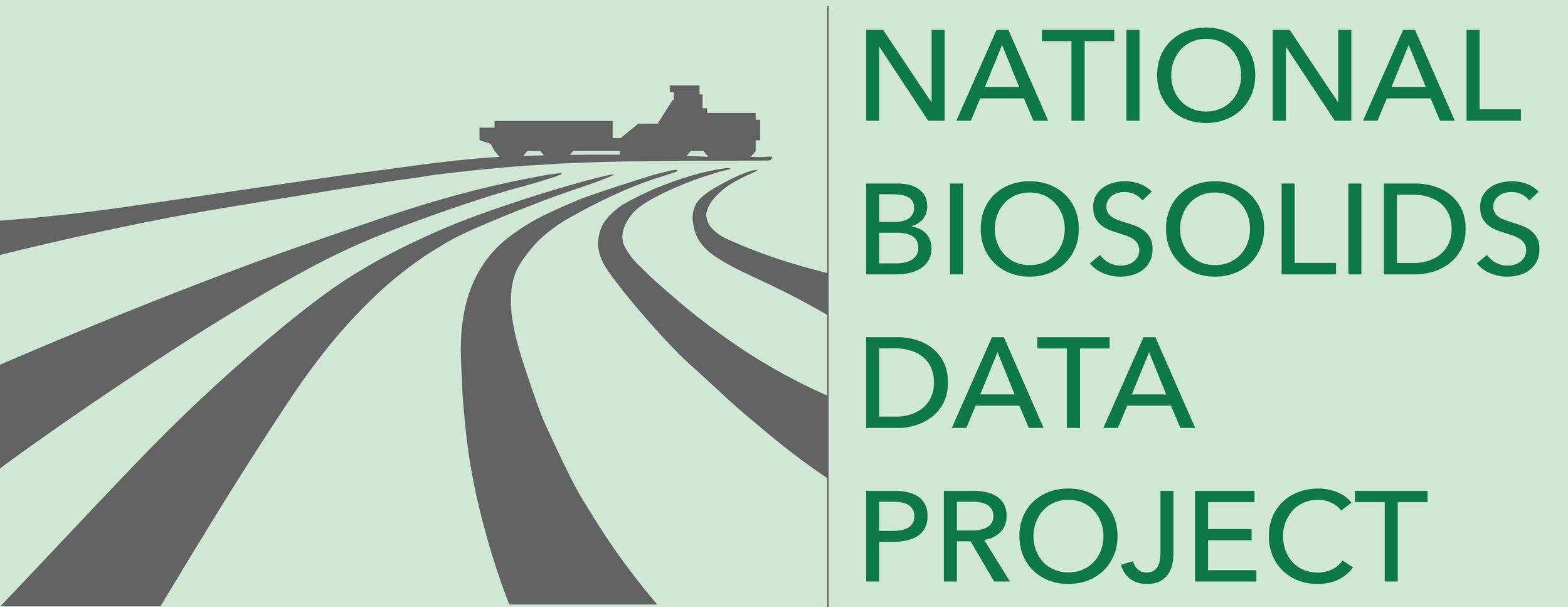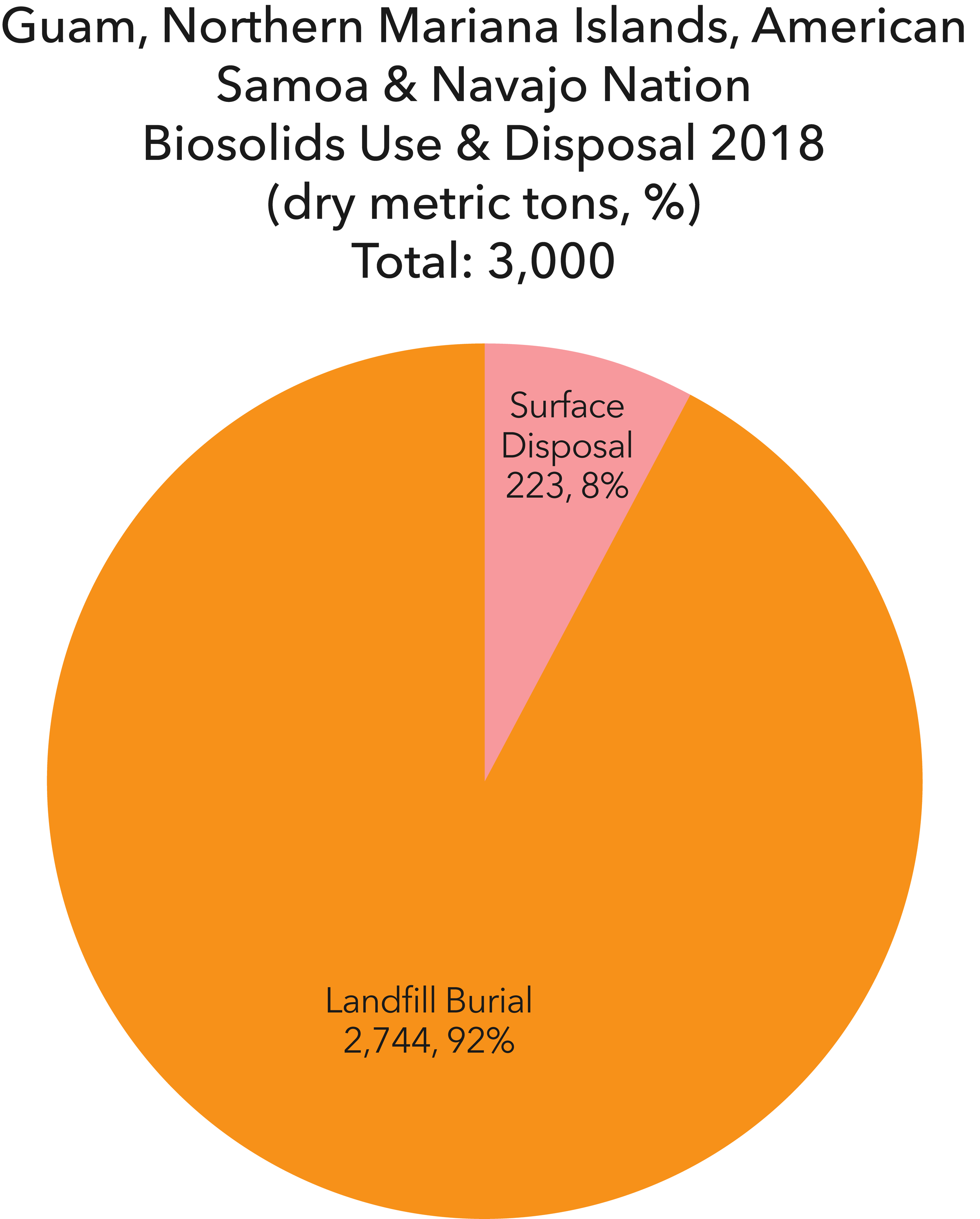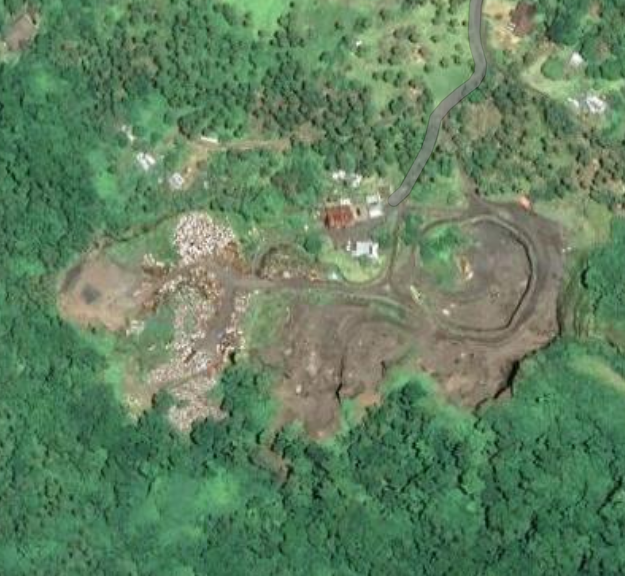Territory Data
Confidence in data for these territories and Navajo Nation:
LOW
2018 data unless noted.
Definitions
Terms used on this website and in data sets are defined & discussed here.
Biosolids composting trial in Guam. Photo courtesy of Jacobs and Port Authority of Guam.
Futiga Landfill on American Samoa. Photo courtesy of Google Maps.
State Statistics Dashboard
Territory Summary
● Navajo Nation, located in the northeast corner of Arizona and extending into New Mexico and Utah, has ~173,000 people living in the Navajo territory. The tribal government is responsible for six water resource recovery facilities (WRRFs). In 2016, the tribal utility authority managing the facilities came to an agreement with U.S. EPA to build upgrades to help meet permit requirements. As of the early 2020s, projects were moving forward with the help of U.S. Department of Agriculture funding support and other funds. Said U.S. Senator Tom Udall “Improving water and wastewater infrastructure is essential to the health and prosperity of rural communities across New Mexico... Smart investments like these will increase economic activity, ensure access to clean, reliable water and safeguard the health of tens of thousands of New Mexicans in Shiprock, Garfield, East Pecos and Socorro” (Farmington Daily Times, 12/4/2018). Solids from Najavo Nation wastewater treatment are either landfilled or stored for several years or more in lagoons. The Najavo Nation has its own Clean Water Act that includes sludge regulations, administered and enforced by the Navajo Nation Environmental Protection Agency.
● In Guam, population ~166,000, Guam Waterworks Authority’s wastewater division operates two major and four minor WRRFs, “ranging from 0.1 million gallons daily (MGD) to 12 MGD capacity and two ocean outfalls.” The capital village of Hagåtña has the Agana/Hagåtña WRRF, with 5.8 MGD average flow. The Northern District treats an average of 5.5 MGD. These facilities treat wastewater with chemically-enhanced primary treatment and dispose of nearly 2,000 dry metric tons (dmt) of solids per year at the Layon Landfill. The four smaller facilities treat from 3,000 gallons per day to 1 MGD; the largest is a secondary treatment facility and all the rest are lagoons that store solids for many years and only use or dispose of them every 5 – 30 years. As of 2020, composting of biosolids is being trialed and planned with the collaboration of Jacobs, Port Authority of Guam, Landscape Management Systems, and Guam Zero Waste Working Group. The hope is to put biosolids to use and save precious landfill space, which, on any populated island, is valuable and limited.
● In the Commonwealth of the Northern Mariana Islands (CNMI) (population ~57,000), north of Guam, the Commonwealth Utilities Corporation provides electricity, water, and wastewater services for the islands of Saipan, Tinian, and Rota. In 2015, master planning for wastewater treatment was completed and construction of improvements are ongoing. In 2018, the Islands’ wastewater solids were landfilled.
● In American Samoa (population ~60,000), in 2018, the 223 dmt of wastewater solids from the Utulei sewage treatment plant, operated by the Samoa Power Authority, were disposed in a surface disposal site. “Sludge from the primary treatment process is transported to the Tafuna STP on the southwestern portion of the island where it is treated by anaerobic digestion and placed in drying beds until...disposal” (NPDES Fact Sheet, 2019).
● The Pacific Island Territories and the Navajo Nation are within the jurisdiction of EPA Region 9.



